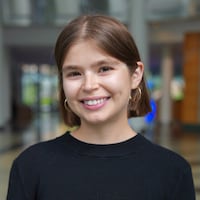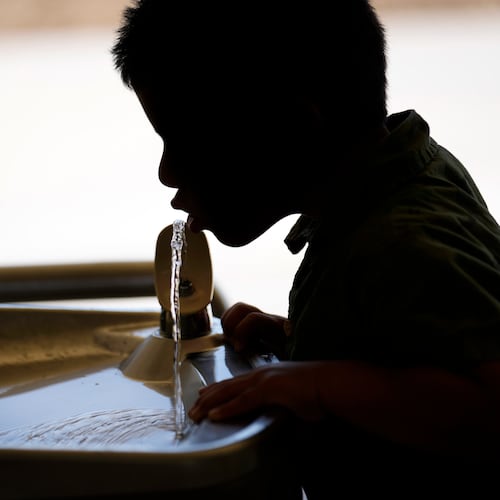In Southwest DeKalb High School teacher Maria Beal-Parker’s chemistry class, students examine the fundamental differences between three COVID-19 vaccines. They’re approaching it from the perspective of non-prescription painkillers: aspirin, Tylenol and Advil all provide relief, but use different methods to treat pain and inflammation.
This lab is a tangible example of how chemical compounds disperse within the body and how vaccines target different structural proteins to deliver the same result. During an era of misinformation and science skepticism, it’s becoming increasingly important to expose students to the scientific process in action, Beal-Parker said. It engages them. Science is everywhere, and often the most direct way to combat misconceptions is to provide information in the context of real-world issues impacting their communities, she said.
Throughout the coronavirus pandemic, area science teachers say their students have shared all types of views about the virus, from how it originated to how the vaccines work. But some of the information they’ve shared is not based on science, leaving teachers to sort it out.
Credit: Curtis Compton
Credit: Curtis Compton
“They can come with their beliefs, but if I can provide a means by which I can validate or invalidate, if I can provide the data to a student who has doubted a science, I can change that construct, regardless of wherever they’re getting that information from,” Beal-Parker said.
Social media has provided science doubters a more public platform, but Americans’ confidence in the scientific and medical communities has consistently increased since 2016, according to a 2019 survey by the Pew Research Center. Public trust has grown over the course of the pandemic, according to a separate Pew survey, despite the wealth of misinformation about the impact of the coronavirus on public health.
But amid the growing trust, Beal-Parker, along with other science educators, is concerned about just that — the impact that the availability of misinformation has and will continue to have on students.
“In this age of instant information, and unchecked and unqualified information, there has been a decrease in the movement of science for our students,” Beal-Parker said, who has worked as a science educator since 1993. “Our students are, for a lack of a better word, attention deficit. They want it now. They want it in increments. And they believe that what they see is the gospel.”
Beal-Parker cites an example of having to talk through evidence about the Earth’s shape with a student after Brooklyn Nets point guard Kyrie Irving spoke about the flat Earth theory on a podcast.
Students coming to class with misconceptions is not a new phenomenon, said Donna Barrett-Williams, the president of the Georgia Science Teachers Association and retired science teacher. Students don’t approach the classroom as blank slates, and often come in with lingering unchallenged ideas about basic science concepts, like believing that global warming is caused by a hole in the ozone layer or that vaccines cause autism spectrum disorders.
The challenge, she said, is how to address them and combine students’ beliefs with facts learned in the classroom.
Teresa Massey, an environmental science teacher at Elizabeth Andrews High School in Stone Mountain, often discusses subjects that clash with students’ intuitive beliefs. She finds that some students are hesitant to revise their thinking if they’ve heard about it from another person, whether it’s misinformation about the way the body works, where water comes from or humans descending from apes.
“[Students] might just make a blanket statement that something doesn’t work because it happened to a family member, as opposed to not thinking it through,” said Massey, who serves as a district representative for the state science teachers association. “But what about many other people that that didn’t happen to?”
The educators say incorporating real-world situations, like Beal-Parker’s aspirin study, into science and engineering lessons helps. It’s not about denying their line of thinking, but building on it by using tools learned in the classroom to research their ideas and draw their own conclusions, Barrett-Williams said.
This practice, referred to as phenomena-based learning, allows for students to draw connections between general science concepts and the world around them.
Massey often tells her students that both she and the textbook aren’t the end-all-be-all of scientific knowledge.
“I try to tell them to not believe anything anybody says, including me,” Massey said. “I am here as a teacher. I am here as a facilitator — I’m going to show you different things that you can read, that you can understand and try to synthesize and put it together for yourself.”
About the Author
Keep Reading
The Latest
Featured



